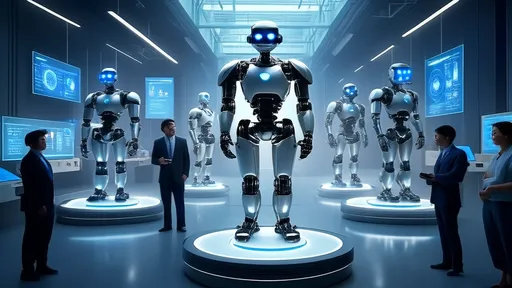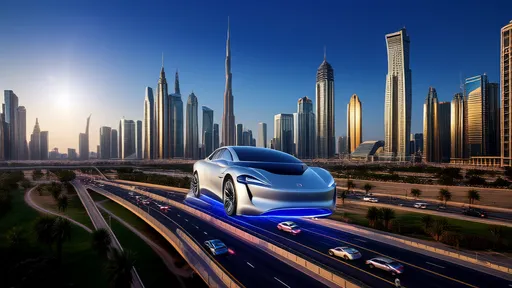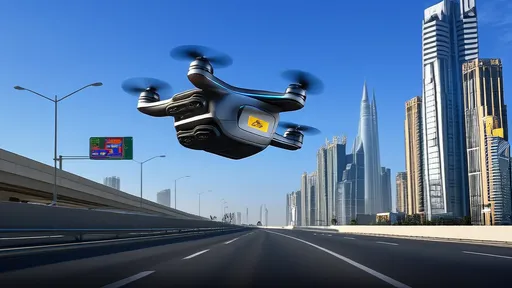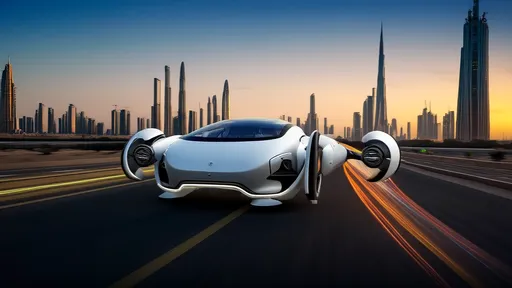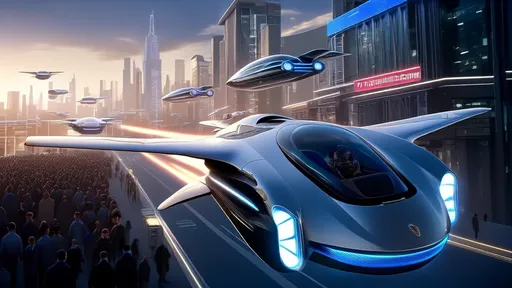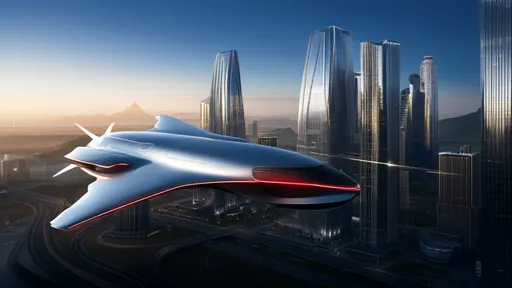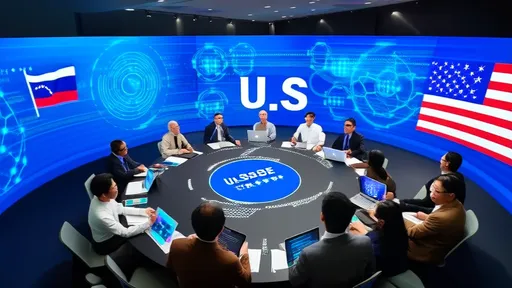The ASEAN-US AI Cooperation Forum concluded its third annual session this week with a renewed commitment to bridging the digital divide through focused capacity building and infrastructure development. Held against the backdrop of rapid technological advancement, the forum brought together policymakers, industry leaders, and academics to chart a collaborative path forward, recognizing that the benefits of artificial intelligence must be distributed equitably to ensure regional stability and prosperity.
The discussions, which spanned three days, repeatedly underscored a central theme: technological potential is meaningless without the foundational structures to support it. Delegates from Southeast Asian nations shared candid assessments of their domestic landscapes, highlighting both the immense opportunities AI presents for economic growth and the significant hurdles that remain. The gap in digital infrastructure between urban centers and rural communities was identified as a primary challenge, one that risks creating a two-tiered society if left unaddressed.
In his opening address, the forum's chair emphasized that this partnership is not merely about technology transfer, but about co-creating a sustainable ecosystem. "We are not here to receive finished solutions," he stated. "We are here to build the workshops, the schools, and the power grids of the digital age, together. This is about fostering an environment where ASEAN nations are not just consumers of AI, but active architects of their own digital futures." This sentiment resonated throughout the conference, setting a tone of mutual respect and shared ambition.
A significant portion of the forum was dedicated to the tangible aspects of infrastructure. While the world often envisions AI in terms of sleek algorithms and data streams, its physical backbone—data centers, cloud computing resources, and high-speed connectivity—forms the bedrock of any AI strategy. Several sessions focused on the logistical and financial challenges of building this backbone in archipelagic nations and across diverse terrains. The conversation moved beyond simple hardware provision to encompass energy efficiency and environmental sustainability, with a push for green data center initiatives that align with the region's climate goals.
Parallel to the infrastructure talks was a deep dive into the human element of the AI revolution. Capacity building emerged as the indispensable counterpart to physical construction. A senior official from a leading US tech firm presented findings from a regional skills gap analysis, revealing a stark shortage of AI talent, from data scientists and engineers to ethicists and policy specialists. "You can have the most powerful supercomputer in the world," she noted, "but without the minds to guide it, it is merely an expensive paperweight. Our joint mission is to ignite a passion for AI literacy from the classroom to the boardroom."
This has catalyzed a series of new initiatives announced at the forum. A consortium of American universities will partner with ASEAN higher education institutions to develop localized AI curricula, moving beyond a one-size-fits-all approach. Furthermore, a flagship exchange program will see hundreds of ASEAN students and professionals undertake residencies at US AI research hubs, with a reciprocal program established for American experts to work on region-specific challenges in Southeast Asia. The focus is on creating a virtuous cycle of knowledge sharing and practical application.
The private sector's role was also a key point of deliberation. Panel discussions featuring venture capitalists and startup founders highlighted the critical need for a supportive innovation ecosystem. This includes not only funding but also regulatory sandboxes that allow for safe experimentation with new AI applications. There was a strong consensus that for AI to truly take root, it must solve local problems—be it in agriculture, healthcare, or disaster management. Homegrown innovation, tailored to the unique socio-economic context of Southeast Asia, was identified as the ultimate marker of success for the partnership.
Of course, the path forward is not without its complexities. Discussions on data governance and ethical frameworks were particularly nuanced. Delegates grappled with balancing the free flow of data necessary for AI development with the imperative of protecting citizen privacy and national security. The forum did not seek to impose a single regulatory model but rather facilitated a dialogue on developing interoperable standards that can foster trust and cross-border collaboration. The establishment of a joint ASEAN-US working group on AI ethics and standards was a concrete outcome of these sensitive yet crucial conversations.
As the forum drew to a close, the mood was one of cautious optimism. The challenges are immense, from funding constraints to geopolitical undercurrents. However, the collective will to navigate them appears stronger than ever. The partnership has moved past the stage of conceptual agreement into a phase of concrete, project-based collaboration. The focus on capacity building and infrastructure, while less glamorous than discussions about artificial general intelligence, strikes at the very heart of sustainable and inclusive development.
The success of this endeavor will not be measured in the short term by breakthrough algorithms, but in the long-term by the number of communities connected, the students empowered with new skills, and the local businesses that leverage AI to thrive. The ASEAN-US AI Cooperation Forum has laid down a marker, defining the partnership not as a donor-recipient relationship, but as a strategic investment in a shared digital future, built from the ground up.
The once-fantastical vision of humanoid robots, long confined to the pages of science fiction and the silver screen, is steadily materializing into a tangible engineering reality. This evolution is not the result of a single, monumental breakthrough but rather a profound and intricate symphony of advancements across a multitude of scientific and engineering disciplines. The quest to create machines that not only look but also move, perceive, and interact with the fluidity and adaptability of humans represents one of the most ambitious technological endeavors of our time. It is a grand convergence, where progress in artificial intelligence, materials science, mechanical engineering, and cognitive science coalesces to breathe life into metal and silicon, pushing the boundaries of biomimicry to unprecedented heights.
The recent inclusion of humanoid robots in the 2025 Top Ten Global Engineering Achievements marks a watershed moment in technological history. This recognition transcends mere academic acknowledgment; it represents a collective global validation of decades of research, development, and iterative innovation in robotics. For years, humanoid robots existed primarily in the realms of science fiction and laboratory prototypes, often viewed as fascinating but distant curiosities. Their elevation to a top global engineering feat signals a profound shift—a transition from conceptual marvels to tangible agents of change poised to reshape our societal and industrial landscapes.
In a landmark recognition of human engineering prowess, China's full-ocean-depth manned submersible has been selected among the 2025 Top Ten Global Engineering Achievements, standing shoulder-to-shoulder with revolutionary projects like quantum computing infrastructure and Mars colonization prototypes. This prestigious listing, announced by the International Engineering Consortium earlier this morning, represents more than just technological acknowledgment—it signifies humanity's renewed commitment to conquering Earth's final frontier.
In the heart of Dubai's morning rush hour, the familiar gridlock of Sheikh Zayed Road stretches for kilometers below, but above the shimmering asphalt, a new dimension of transportation is quietly rewriting the rules of urban mobility. As first reported by The Times of India, the city's ambitious flying car initiative has transitioned from futuristic concept to operational reality, with commuters now gliding between skyscrapers in electric vertical take-off and landing vehicles. This isn't a scene from a science fiction film but the new daily reality for a growing number of Dubai residents who have traded their terrestrial commutes for the freedom of three-dimensional travel.
The desert skies of the United Arab Emirates, long dominated by the sleek silhouettes of commercial airliners and private jets, are poised to welcome a new kind of vessel. In a landmark decision that signals a significant leap from science fiction to tangible reality, a specific model of flying car has been granted a special certificate of flight from the UAE's civil aviation authority. This is not merely a provisional test permit for a closed course; it is a crucial regulatory nod that brings the vision of urban air mobility one giant step closer to the daily lives of the region's residents.
In a move signaling a new era of technological collaboration, Southeast Asian nations and the United States are forging a groundbreaking partnership in artificial intelligence development. This strategic alliance emerges at a critical juncture when global AI governance remains fragmented and the technology's potential to reshape economies and societies becomes increasingly apparent. The collaboration represents more than just technical cooperation—it embodies a shared vision for responsible innovation that respects cultural diversity while addressing common challenges.
The Euclid Space Telescope, humanity's newest and most ambitious eye on the cosmos, has begun its monumental mission to pierce the profound darkness that envelops our universe. Launched into the silence beyond our atmosphere, its purpose is not merely to capture stunning celestial portraits but to map the invisible architecture of reality itself. For decades, astronomers have known that the cosmos we see—the glittering tapestry of stars, galaxies, and nebulae—comprises a mere five percent of the total content of the universe. The remaining ninety-five percent is a profound mystery, a dual enigma composed of dark matter and dark energy. These are the phantoms of physics, entities that do not emit, absorb, or reflect light, yet whose gravitational influence dictates the fate of everything we hold visible. Euclid is our most sophisticated attempt to date to bring these shadows into the light, to understand the hidden forces that have shaped the universe's past and will determine its ultimate destiny.
Beijing's National Stadium, once the iconic centerpiece of the 2008 Summer Olympics, echoed with a different kind of applause this week. The thunderous cheers were not for human athletes pushing the limits of physical endurance, but for their mechanical counterparts—humanoid robots competing in the inaugural World Humanoid Robot Sports Games. The air, thick with the whirring of servos and the collective anticipation of engineers and spectators, marked a pivotal moment in the history of robotics and international sport.
The landscape of oncology treatment is undergoing a profound transformation, driven by the emergence of third-generation antibody-drug conjugates (ADCs). These sophisticated therapeutic agents represent a significant leap forward in the quest for precision medicine, offering new hope for patients battling various forms of cancer. Unlike conventional chemotherapy that attacks both healthy and cancerous cells indiscriminately, these advanced biologics deliver potent cytotoxic agents directly to tumor cells, minimizing damage to healthy tissues and reducing debilitating side effects.
In the relentless battle against cancer, a revolutionary class of therapeutics has emerged, earning the evocative moniker of "precision missiles" for their ability to deliver potent cytotoxic agents directly to malignant cells while sparing healthy tissue. These are Antibody-Drug Conjugates, or ADCs, and they represent a sophisticated fusion of biologic targeting and potent chemotherapy, a paradigm shift in oncology that is redefining treatment expectations for a growing number of cancers.
The desert skies above Dubai witnessed a historic moment last week as the sleek silhouette of a flying car cut through the cerulean blue, marking what many industry experts are calling the dawn of a new era in personal transportation. The demonstration, orchestrated by the pioneering aviation firm AeroMobil Emirates, was not merely a test flight; it was a powerful statement of intent, a tangible promise of a future once confined to the pages of science fiction.
In a remarkable demonstration of growing consumer confidence in aerial mobility solutions, global pre-orders for flying cars have surged past the 7,000-unit milestone. This significant threshold, reached far earlier than most industry analysts had projected, signals a fundamental shift in public perception about the viability of personal air transportation. What was once confined to science fiction novels and futuristic concept videos is rapidly transforming into a tangible consumer product category with demonstrated market demand.
In the shimmering heat of the Arabian Gulf, a new silhouette is beginning to pierce the horizon. It is not the familiar form of a commercial airliner nor the sleek profile of a private jet, but something altogether more futuristic—a flying car. This vision, once confined to the realms of science fiction, is fast becoming a tangible reality, and it is Chinese innovation that is poised to turn the skies above Dubai, Abu Dhabi, and Riyadh into a dazzling new theater of urban mobility.
The relentless march of artificial intelligence demands computational power on a scale previously unimaginable. At the heart of this revolution lies the Graphics Processing Unit, or GPU, which has evolved from a specialized graphics rendering component into the primary engine for AI workloads. The latest generation of GPU architectures represents a paradigm shift, not merely an incremental improvement. These new designs are fundamentally re-engineering the silicon to tackle the unique and colossal demands of modern AI, with a core focus on achieving unprecedented levels of computational density and efficiency through hyper-scale integration.
The ASEAN-US AI Cooperation Forum concluded its third annual session this week with a renewed commitment to bridging the digital divide through focused capacity building and infrastructure development. Held against the backdrop of rapid technological advancement, the forum brought together policymakers, industry leaders, and academics to chart a collaborative path forward, recognizing that the benefits of artificial intelligence must be distributed equitably to ensure regional stability and prosperity.

